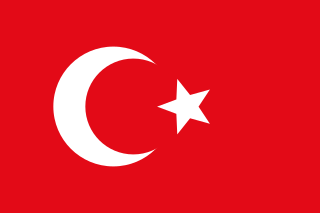 W
WThe Eyalet of Rumeli or Rumelia, also known as the Beylerbeylik of Rumeli, was a first-level province of the Ottoman Empire encompassing most of the Balkans ("Rumelia"). For most of its history it was the largest and most important province of the Empire, containing key cities such as Edirne, Yanina (Ioannina), Sofia, Manastır/Monastir (Bitola), Üsküp (Skopje), and the major seaport of Selanik/Salonica (Thessaloniki).
 W
WThe 1901 Massacres of Serbs were multiple massacres of Serbs in the Kosovo Vilayet of Ottoman Empire, carried out by Albanians.
 W
WA period of Albanian piracy occurred from the 15th to the 19th centuries, during which Albanian pirates plundered and raided ships. These pirates were based mainly in Ulcinj, but were also found in Bar and Ragusa, and had connections with North Africa.
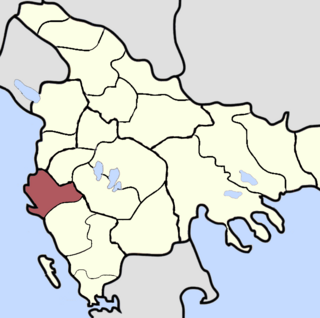 W
WThe Sanjak of Avlona was one of the sanjaks of the Ottoman Empire which county town was Berat in Albania. It was established in 1466, after the construction of the Elbasan Castle of the territory that belonged to the preceding Ottoman sanjak, Sanjak of Albania.
 W
WThe Lordship of Berat was a principality active in medieval era ruled by the Albanian Muzaka noble family with its capital at Berat. In 1385, during the Battle of Savra, the Ottomans captured Berat from Balša II, together with Kruja and Ulcinj. They soon retreated from all of those towns keeping only Castoria under their permanent control. Some sources explain that Ottomans probably remained in Berat with intention to use it as foothold to capture Valona. By 1396 Muzaka family took over control of Berat. In 1417 Berat became a part of the Ottoman Empire.
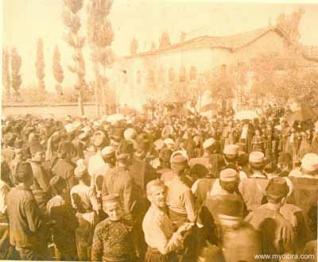 W
WThe Congress of Dibra was a congress held by members of Albanian committee in Debar from July 23 to July 29, 1909. The congress was chaired by Vehbi Dibra, Grand Mufti of the Sanjak of Dibra and was sponsored by the government of the Young Turks. It was held on the first anniversary of the Young Turk Revolution and was a countermeasure on the Latin script based Albanian alphabet which came out of the Congress of Manastir.
 W
WThe Congress of Elbasan, also known between Albanians as the Congress of the Albanian schools, was held from 2 to 8 September 1909 in Elbasan, today's Albania, back then part of the Vilayet of Monastir of the Ottoman Empire. The congress, sponsored by the local Bashkimi literary club, was attended by 35 delegates from central and southern Albania.
 W
WThe Sanjak of Elbasan was one of the sanjaks of the Ottoman Empire. Its county town was Elbasan in Albania.
 W
WThe Elifba alphabet was the main writing system for the Albanian language during the time of the Ottoman Empire from 14th century to 1911. This Albanian variant of the Abjad Ottoman-Persian script was used to write the Albanian language. The last version of the Elifbaja shqip was invented by the leader of the Albanian National Awakening, Muslim scholar Rexhep Voka (1847-1917).
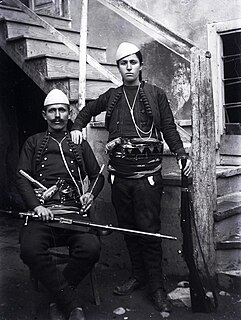 W
WAzem Bejta, commonly known as Azem Galica, was an Albanian nationalist and rebel who fought for the unification of Kosovo with Albania.
 W
WIslam in Albania mainly arrived during the Ottoman period when the majority of Albanians over time converted to Islam and in particular two of its denominations: Sunni and Bektashi. Following the Albanian National Awakening (Rilindja) tenets and the deemphasizing of religion during the 20th century, the democratic, monarchic, and later the communist governments followed a systematic dereligionization of the Albanian nation and national culture. Due to this policy, Islam, as with all other faiths in the country, underwent radical changes. Decades of state atheism, which ended in 1991, brought a decline in the religious practice of all traditions. The post-communist period and the lifting of legal and other government restrictions on religion allowed Islam to revive through institutions that generated new infrastructure, literature, educational facilities, international transnational links and other social activities. According to 2011 census, 58.79% of Albania's population adheres to Islam, making it the largest religion in the country. For contemporary Muslims in Albania, Muslim religious practices tend to be minimal. The remaining population belongs either to Christianity, which is the second largest religion in the country practiced by 16.99% of the population or are irreligious.
 W
WIslam in Albania (1800–1912) refers to the period that followed on after the conversion to Islam by a majority of Albanians in the 17th and 18th centuries. By the beginning of 19th century Islam had become consolidated within Albania and little conversion occurred. With the Eastern Crisis of the 1870s and its geo-political implications of partition for Albanians, the emerging National Awakening became a focal point of reflection and questioned the relationship between Muslim Albanians, Islam and the Ottoman Empire. These events and other changing social dynamics revolving around Islam would come to influence how Albanians viewed the Muslim faith and their relationship to it. Those experiences and views carried on in the 20th century had profound implications on shaping Islam in Albania that surfaced during the communist era.
 W
WThe Vilayet of Janina, Yanya or Ioannina was a first-level administrative division (vilayet) of the Ottoman Empire, established in 1867. In the late 19th century, it reportedly had an area of 18,320 square kilometres (7,070 sq mi). It was created by merging the Pashalik of Yanina and the Pashalik of Berat with the sanjaks of Janina, Berat, Ergiri, Preveze, Tırhala and Kesriye. Kesriye was later demoted to kaza and bounded to Monastir Vilayet and Tırhala was given to Greece in 1881.
 W
WKachaks is a term used for the Albanian bandits active in the late 19th and early 20th century in northern Albania, Montenegro, Kosovo and Macedonia, and later as a term for the militias of Albanian revolutionary organizations against the Kingdom of Serbia (1910–18) Kingdom of Yugoslavia (1918–24), called the "Kaçak movement".
 W
WThe Karadağ Border General Forces Corps of the Ottoman Empire was an ad hoc corps under the command of the Ottoman Western Army during the First Balkan War. It was formed in the vicinity of Yakova (Gjakova) and Pirzerin (Prizren) with remnant units of İpek Detachment and Priştine Detachment and its headquarters was established in Derbe-i Bala (Debar) on November 9, 1912.
 W
WThe Mosque of Mahmud Agha Kokonozi or New Bazaar Mosque is a mosque in Tirana, Central Albania, Albania. It is an Ottoman-era mosque built in 1750 and one of the few mosques that survived the communist dictatorship under the Hoxhaist regime.
 W
WVrana (1458), historically known as Vrana Konti was an Albanian military leader who was distinguished in the Albanian-Turkish Wars as one of the commanders of Gjergj Kastrioti Skanderbeg, of whom he was one of the closest councillors. He probably belonged to the class of small lords who were tied to the Kastrioti family and possibly belonged to a common lineage (fis) with them. In his youth, he fought as a mercenary in the armies of Alfonso the Magnanimous. The term conte ("count") with which he became known in historical accounts didn't refer to an actual title he held, but to his status as a figure of importance.
 W
WThe Vilayet of Kosovo was a first-level administrative division (vilayet) of the Ottoman Empire in the Balkan Peninsula which included the current territory of Kosovo and the north-western part of the Republic of North Macedonia. The areas today comprising Sandžak (Raška) region of Serbia and Montenegro, although de jure under Ottoman control, were in fact under Austro- Hungarian occupation from 1878 until 1909, as provided under Article 25 of the Treaty of Berlin. Uskub (Skopje) functioned as the capital of the province and the mid way point between Istanbul and its European provinces. Uskub's population of 32,000 made it the largest city in the province, followed by Prizren, also numbering at 30,000.
 W
WKrasniqi is a historical Albanian tribe and region in the Accursed Mountains in northeastern Albania, bordering Kosovo.. The region lies within the Tropojë District and is part of a wider area between Albania and Kosovo that is historically known as Malësia e Gjakovës. Krasniqi stretches from the Valbonë river in the north to Lake Fierza in the south and includes the town Bajram Curri. Members of the Krasniqi tribe are also found in Kosovo and Northern Macedonia.
 W
WOld Bazaar of Korçë is an Ottoman-era bazaar in Korçë, Albania.
 W
WThe Partition of Albania is a term used for the partition of the Albanian state, which proclaimed its independence on 28 November 1912. The delineation of the newly established Principality of Albania under the terms of the London Conference of 1912-1913 and the Ambassadors of the six Great Powers of that time left Albanian and non-Albanian populations on both sides of the border. Representatives of the Albanian national movement viewed this as a partition of claimed Albanian-inhabited territories, also territories contained in a proposed Albanian Vilayet.
 W
WPavlo-Kurtik was an administrative unit within the sanjak of Albania, Ottoman Empire, which had jurisdiction to the south of Tirana, between the Erzen and Shkumbin rivers. It was one of 9 vilayets of the Arvanit-ili province until 1466. Pavlo-Kurtik was first mentioned in the first defter of the sanjak of Albania (1431–1432).
 W
WThe Sanjak of Prizren was one of the sanjaks in the Ottoman Empire with Prizren as its administrative centre. It was founded immediately after Ottoman Empire captured Prizren from Serbian Despotate in 1455. The rest of the territory of Serbian Despotate was conquered after the fall of Smederevo in 1459, and divided into following sanjaks: Sanjak of Vučitrn, Sanjak of Kruševac and Sanjak of Smederevo. At the beginning of the First Balkan War in 1912, the territory of Sanjak of Prizren was occupied by the army of the Kingdom of Serbia. Based on Treaty of London signed on May 30, 1913, the territory of Sanjak of Prizren became part of Serbia.
 W
WThe Sanjak of Albania was a second-level administrative unit (sanjak) of the Ottoman Empire, located in what is today central and southern Albania. Its territory stretched between Krujë in the north and Kalamas river in the south. It was established in 1415–17, and was disestablished in 1466 with the establishment of the Sanjak of Elbasan.
 W
WThe Sanjak of Delvina was one of the sanjaks of the Ottoman Empire which county town was Delvinë but during the 18th century became Gjirokastër, Albania. It was created in the middle of 16th century and disestablished after the Balkan Wars in 1913. Its territory was divided among newly established short lived states: the Principality of Albania and Autonomous Republic of Northern Epirus.
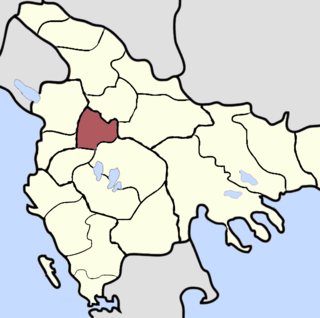 W
WSanjak of Dibra, or Sanjak of Debar, was one of the sanjaks of the Ottoman Empire which county town was Debar in Macedonia. The western part of its territory today belongs to Albania and the east to the Republic of North Macedonia.
 W
WThe Battle of Savra or the Battle of the Vjosë was fought on 18 September 1385 between Ottoman and much smaller Zetan forces, at the Savra field near Lushnjë. The Ottomans were invited by Karlo Thopia to support him in his feud against Balša II.
 W
WThe Sanjak of Scutari or Sanjak of Shkodra was one of the sanjaks of the Ottoman Empire. It was established after Ottoman Empire acquired Shkodra after the siege of Shkodra in 1478-9. It was part of Rumelia Eyalet until 1867, when it became a part, together with Sanjak of Skopje, of newly established Scutari Vilayet. In 1912 and beginning of 1913 it was occupied by members of Balkan League during the First Balkan War. In 1914 the territory of Sanjak of Scutari became a part of Principality of Albania, established on the basis of peace contract signed during London Conference in 1913.
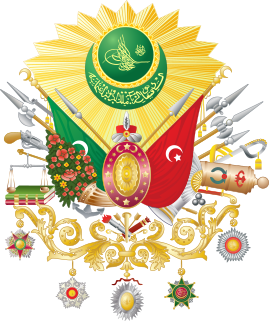 W
WThe Second Constitutional Era of the Ottoman Empire established shortly after the 1908 Young Turk Revolution which forced Sultan Abdul Hamid II to restore the constitutional monarchy by the revival of the Ottoman Parliament, the General Assembly of the Ottoman Empire and the restoration of the constitution of 1876. The parliament and the constitution of the First Constitutional Era (1876–1878) had been suspended by Abdul Hamid in 1878 after only two years of functioning. Whereas the First Constitutional Era had not allowed for political parties, the Young Turks amended the constitution to strengthen the popularly elected Chamber of Deputies at the expense of the unelected Senate and the Sultan's personal powers, and formed and joined many political parties and groups for the first time in the Empire's history.
 W
WThe fourth Siege of Shkodra of 1478–79 was a confrontation between the Ottoman Empire and the Venetians together with the Albanians at Shkodra and its Rozafa Castle during the First Ottoman-Venetian War (1463–1479). Ottoman historian Franz Babinger called the siege "one of the most remarkable episodes in the struggle between the West and the Crescent". A small force of approximately 1,600 Albanian and Italian men and a much smaller number of women faced a massive Ottoman force containing artillery cast on site and an army reported to have been as many as 350,000 in number. The campaign was so important to Mehmed II "the Conqueror" that he came personally to ensure triumph. After nineteen days of bombarding the castle walls, the Ottomans launched five successive general attacks which all ended in victory for the besieged. With dwindling resources, Mehmed attacked and defeated the smaller surrounding fortresses of Žabljak Crnojevića, Drisht, and Lezha, left a siege force to starve Shkodra into surrender, and returned to Constantinople. On January 25, 1479, Venice and Constantinople signed a peace agreement that ceded Shkodra to the Ottoman Empire. The defenders of the citadel emigrated to Venice, whereas many Albanians from the region retreated into the mountains. Shkodra then became a seat of the newly established Ottoman sanjak, the Sanjak of Scutari. The Ottomans held the city until Montenegro captured it in April 1913, after a six-month siege.
 W
WThe Tanners' Mosque is a historic mosque located near the Tanners' Bridge in Tirana, capital of Albania. Built in the neighborhood of the handicraft-trade Tanners' guild around the seventeenth century in the Ottoman Empire, it was damaged by a lightning shot but continues to function thanks to improvements made by the family Resmja which even today continues to care for.
 W
WVenetian Albania was the official term for several possessions of the Republic of Venice in the southeastern Adriatic, encompassing coastal territories primarily in present-day southern Montenegro and partially in northern Albania.